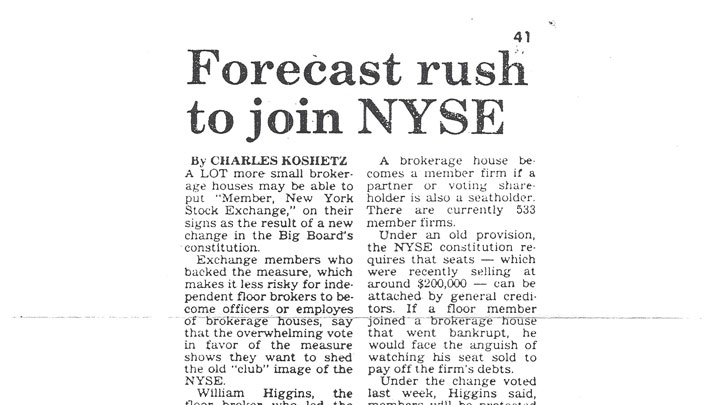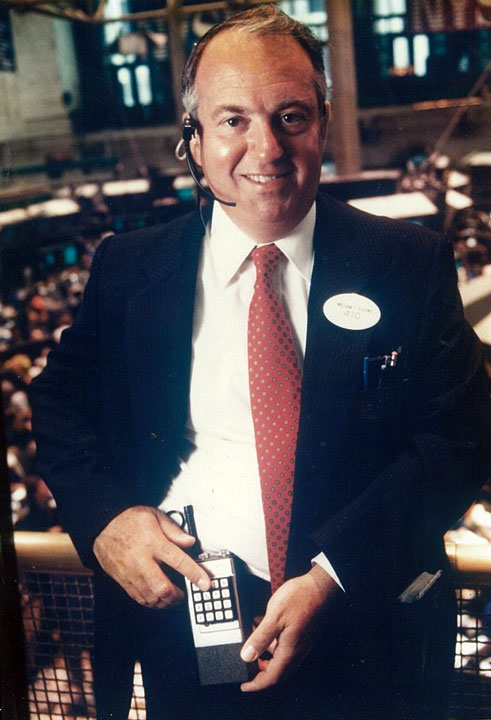William Higgins, the floor broker who led the campaign for the amendment, told The Post that at least 200 floor brokers be hired by small brokerage houses as the result of last week's vote. Higgins insisted that eliminating annual memberships was the less important of the two changes: "What we really did was increase access," he said, predicting an upsurge in small firms that he expected to become member firms.
Under the change voted last week, Higgins said, members will be protected against having his "tools" attached, something that other workers get under state law. "He'll be just like a carpenter or plumber, who can keep his tools and find someone else to work for if his firm is forced out of business," Higgins said.
The "Tool" in this case, the exchange seat, is a little unusual - if only because it costs $200,000 to get one.
Article from The Post DATE TO BE DETERMINED below
Forecast rush to join NYSE
By Charles Koshetz
A LOT more small brokerage houses may be able to put "Member, New York Stock Exchange," on their signs as the result of a new change in the Big Board's constitution.
Exchange members who backed the measure, which makes it less risky for independent floor brokers to become officers or employes of brokerage houses, say that the overwhelming vote in favor of the measure shows they want to shed the old "club" image of the NYSE.
William Higgins, the floor broker who led the campaign for the amendment, told The Post that at least 200 floor brokers be hired by small brokerage houses as the result of last week's vote.
BACK TO TRADITION
The exchange membership also voted to eliminate a program to provide annual memberships. If that move is upheld by the Securities and Exchange Commission, the exchange will revert to its traditional system under which only the owners of Its 1366 permanent "seats"" can trade on the floor.
This measure was narrowly passed over the objections of the NYSE's board of directors, and prompted criticism that the floor members were still determined to limit the access of "outsiders" to the trading floor.
Higgins insisted that eliminating annual memberships was the less important of the two changes: "What we really did was increase access," he said, predicting an upsurge in small firms that he expected to become member firms.
A brokerage house becomes a member firm if a partner or voting shareholder. There are currently 533 member firms.
Under the old provision, the NYSE constitution requires that seats - which were recently selling at around $200,000 - can be attached by general creditors. If a floor member joined a brokerage house that went bankrupt, he would face the anguish of watching his seat sold to pay off the firm's debts.
Under the change voted last week, Higgins said, members will be protected against having his "tools" attached, something that other workers get under state law.
"He'll be just like a carpenter or plumber, who can keep his tools and find someone else to work for if his firm is forced out of business," Higgins said.
The "Tool" in this case, the exchange seat, is a little unusual - if only because it costs $200,000 to get one.

